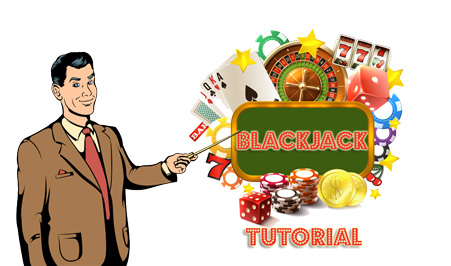How To Play Blackjack Tutorial
Welcome to Casino Mavens' comprehensive blackjack tutorial. This guide covers everything you need to know about blackjack, from the basic rules and history to advanced strategies like card counting and optimal betting techniques. By following this tutorial, you'll be well-equipped to understand and apply effective blackjack strategies, enhancing your gameplay and increasing your chances of success. Whether you're a complete beginner or an experienced player looking to refine your skills, this tutorial is designed to cater to all skill levels. In addition to blackjack, be sure to explore our other tutorials for popular casino games, where you'll find tips and strategies for games like poker, roulette, and baccarat. With the right knowledge and practice, you'll be ready to navigate the casino floor with confidence and skill.
Basic Blackjack Strategy:
Generous rewards for new players making their first deposit.
Advanced Techniques:
Explore strategies like card counting to gain an edge.
Optimal Betting:
Understand betting strategies and bankroll management.

Blackjack History
The origin of Blackjack, like many other casino games, is still debatable. Nonetheless, most people agree the game of Blackjack originated in France in its land-based casinos in the 1700s. The game was called Vingt-et-Un. Vingt-et-Un is a French word that translates to twenty-one (21) in English, which is how players still use to refer to blackjack to this day. Some researchers believe that the game was derived from other card games that were popular in France at the time. These French games were French Ferme & Chemin de Fer, which had many similar rules and procedures.
Though Blackjack is thought to originate in France, the game was first referenced in a novel written in the 1600s by the Spanish author Miguel de Cervantes. In the book, he describes two characters playing a card game that was named Veintiuno (Vingt-et-Un), and the rules of the game were pretty similar if not the exact rules of Blackjack.
Players dealt with cards, and the purpose was to get a hand total that is as close to twenty-one as possible without busting. In this game, the Aces counted as either 1 point or 11, just the like modern-day version of Blackjack. The book was written in the early 17th century, which adds credibility to the theory that the game actually originated in Spain.
Later on, the game of Blackjack traveled throughout Europe, however, leaving the most prominent tracks in Spain and France. Eventually, the game was introduced to the US.
Among the different versions of Blackjack, Vingt-et-Un (21) was the one that spread the most. It started to appear gradually in North America among the French colonists. However, the rules of Vingt-et-Un at that time differed slightly from modern-day Blackjack. For example, the dealer was the only person permitted to double down, and there were wagering rounds between each dealt card.
The game became very popular in Nevada as it was the first state to legalize gambling in 1931.
At that time, the game was still named 21. For the casinos to attract players and encourage them to play the game, they offered the chance to place a special bet. This bet would pay players 10: 1 if they got a blackjack with a Jack of Clubs or Spades, along with an Ace of Spades. This is where the name Blackjack originated.
How to Play Blackjack
Like any casino card game, players will start by placing a bet. This is the final bet and players will not be able to reduce it or add to it (unless the game allows for doubling down) during gameplay. Once players place their respective bets, they will get two cards facing up while the dealer will give himself two cards though one is facing down, and the other is facing up. In some versions, the two cards of the dealer will also be facing up, for example in Blackjack Double Xposure. Players must then decide their next moves based on the value of their cards and the visible card of the dealer, employing strategies to increase their chances of winning. In recent years, advancements in technology and growing interest in online gaming have influenced online gambling trends and insights, leading to innovative variations of classic games like Blackjack that cater to a wider audience. Understanding these trends can help players identify dynamic gameplay options and opportunities for enhancing their skills in the evolving landscape of online casinos.
Some games allow players to place bets on more than one blackjack hand; they are called multi-hand blackjack games. In these games, players will place a separate bet for each hand, and each hand is played separately. Although it is very rewarding, and it enables players to recover from the loss of one of the hands by winning the rest, it can also be devastating if the dealer gets a good hand or a blackjack.
Players will calculate their hand total, and make a decision to: either “Hit” or “Stand.” If they “Hit”, it means that they are not satisfied with their hand total and that they want more cards. They can keep hitting until they “Stand” which means that they are happy with the hand total or until they “Bust.” Busting means going over 21; if players bust, the hand is an immediate loss.
Once players stand, the dealer will show his hole card, which is the card that was facing down. He will then start “Hitting” which means to draw more cards until he reaches or passes 17. Some games obligate the dealer to stand on all 17s, and some require the dealer to stop at only Hard 17s. After the dealer stands, a comparison between the hand of the dealer and the hand of the player will take place. The hand that is closest to 21 is the winning hand. If the two hands have the same value, it’s a tie, which really depends on the rules of each version. When there is a tie, it is called a “Push”; some versions would consider it a tie and give players back their bets while other games consider a Push to be in the favor of the dealer.
There are other decisions that players will need to make during the gameplay. For example, players can “Split” If they get identical cards to form two hands. The two hands will have the same value of the original bet. Some versions would enable players to split more than once to form 4 different Blackjack hands. Also, some versions would allow players to split, unlike ten-value cards like a Ten and a Jack, or a Jack and a Queen. Players can split aces in some versions, but they will only be able to hit once and if they get a ten-value card, they will be paid even money as it is considered an average win and not a Blackjack.
Blackjack Rules
The rules of blackjack depend on which version is being played. Players are advised to check the rules of the specific blackjack version they are playing before engaging in the game. Although there are common rules like 21, busting, the dealing procedure and the card value, there are other rules that differ.
Card Values:
The card values are equal to the face value of each card, while Jacks, Queen, and Kings have a value of ten. Aces can be counted as either 11 or 1, depending on the blackjack hand. If it forms a total while being counted as 11, it is called soft, and if it creates a total while being counted as 1, it is called hard. For example, a hand that consists of an Ace and a five is a soft sixteen and a hard six.
Splitting Rules:
Splitting is allowed in every blackjack game, but some games will not allow splitting Aces and some games will only allow players to split 1 time. Players who split aces will only be allowed to hit once and get one more card. Players can split unlike ten-value cards depending on the rules of each game; some allow it while some require players to get identical ten-value cards so they can split. Splitting means that players will place a new wager which on the new hand, which is equal to the original wager was placed on the Blackjack hand; with four hands players can quadruple their original wager.
Double Down Rules:
Players will be permitted to double down after they get their first two cards. Some games enable players to double down at any value and others only allow them to double down if they get a hand total that is equal to 9, 10 or 11. Players will only be able to get one more card after they double, they will have to take that card, because it is not optional.
Surrender Rules:
Some games will give players the chance to surrender their blackjack hands; it is the equivalent of folding in poker. Players can make that decision after they are dealt the initial two cards. If they surrender, they will forfeit the hand, and they will lose half of their bet. Sometimes it is better to lose half than to lose the entire bet.
Insurance Rules:
Insurance is a side bet that players can place if the dealer’s card that is facing up is an Ace or a ten-value card. Players will win that bet if the hand has a blackjack. The dealer will peek and see his card once players place that wager and pay it out if it is a blackjack.
Blackjack Insurance
If players do not place insurance, and the dealer gets a blackjack, all the wagers, except insurance will bust. If the player has a blackjack as well, it is considered a push. Some variations will give players their bets back, while others consider a push to be in the favor of the house.
Blackjack Odds
For you to fully understand the game, it is essential to comprehend and master the odds of the game and learn about the advantage of the house. It is critical to know how the house gets its edge.
The house has a distinct advantage over the players because players have to draw in blackjack first. If the player busts, the dealer will automatically win regardless of their hand. This is the main advantage the house has, and if everything else is equal, the house edge in a standard game of blackjack would be equal to 8 percent. The player and the dealer have a 28 percent probability of going over 21. Twenty-eight multiplied by twenty-eight means that 8 percent of the time the two hands will go over 21, and since the player will draw first, the dealer will win if and when they both bust.
Odds of Busting Based on Dealer’s First Card Drawn
Of course, the odds are not equal among all variations. Some offer players great advantages and, to balance these benefits; the casino increases its advantage or edge. Because of this, it is essential for players to know everything about the game before playing.
For example, the number of decks in play has a tremendous effect. Some games draw cards from a single deck, which can affect the odds significantly while other games draw the cards from six different decks of cards. If a game uses one deck of cards, the house will change other rules to increase its odds and reduce the odds for players. This is because when a player gets an Ace, it means there are 3 Aces left which decreases the chances for the dealer in getting one of these aces. On the other hand, if the game uses 6 decks, it means that there are 23 Aces remaining in the deck.
The odds on a player’s hand will change every step of the way. For example, if players get two cards, and they hit, the hand total will increase, and the chance of busting will increase, and so forth.
Odds of Busting based on Player’s First Card Drawn
Since Blackjack is one of the games with a reputation of counting cards, a lot of researchers and gamblers have studied the game and the odds so they can increase their chances of winning. You might have seen that in the movie “21” where MIT students developed a way to beat the house. For them to do that, they had to make up a counting system that would increase their advantage. This is why there are published studies that show the percentage of busting and getting a blackjack depending on the first 2 cards, the hand total of the player, and the facing up card of the dealer. You can find more about these strategies and percentages in the Strategy section.
Blackjack Strategy
Before discussing strategy, let us firstly go through some numbers that can be quite helpful. For starters, we will discuss the bust probabilities for each hand total. This will enable players to optimize their game to the fullest by knowing the percentage of busting if they ask for one more card.
- If players get a hand total of 11 or below, the percentage is equal to zero.
- If players get a hand total of 12 or below, the percentage is equal to 31.
- If players get a hand total of 13 or below, the percentage is equal to 39.
- If players get a hand total of 14 or below, the percentage is equal to 56.
- If players get a hand total of 15 or below, the percentage is equal to 58.
- If players get a hand total of 16 or below, the percentage is equal to 62.
- If players get a hand total of 17 or below, the percentage is equal to 69.
- If players get a hand total of 18 or below, the percentage is equal to 77.
- If players get a hand total of 19 or below, the percentage is equal to 85.
- If players get a hand total of 20 or below, the percentage is equal to 92.
From these numbers, players can figure out when they should stand and when they should hit. Players who get a hand total of between 2 and sixteen should generally hit and get another card. If they get a hand total that is more than 17, they should typically stand.
Of course, players will have to take the showing card of the dealer into consideration. The next set of numbers shows the dealer’s chance of busting according to the facing up card.
- Ace (11.65%)
- 10/Face Card (21.43%)
- 9 (23.34%)
- 8 (23.6%)
- 7 (25.9%)
- 6 (42.08%)
- 5 (42.89%)
- 4 (40.28%)
- 3 (37.56%)
- 2 (35.30%)
Taking these numbers into consideration, as well as the previous ones, will help players decide whether they should hit or stand. Below is an in-depth cheat sheet, and great rules to follow, especially for beginners. Obviously, there are exceptions to every rule, and the more you play, the more you may alter or deviate from the below.
When to Split and When Not to Split:
When players get Aces or 8 cards, they should always split. There is a big chance to get a hand total that is closer to twenty-one when you hit on these two cards.
Players should never split 10, 4, or 5 cards, regardless of the upcard of the dealer. Splitting in these scenarios will put you in danger of busting.
Players should split 7, 3, and 2 cards if the dealer is showing a card between a 2 and a 7. If the value of his card is 8 or over, you should hit instead of splitting.
Players should split 6 cards if the dealer is showing a card that has a value between 2 and 6. If the value of his card is equal to 7 or over, you should hit instead of splitting.
Table of Contents
Our Favorite Online Casino
Discover our top pick for online casinos, featuring user reviews, ratings, and exclusive bonuses.
Slots.LV
Slots.lv Casino is a popular online casino known for its extensive game library, excellent customer service, and fast payouts. It offers over 400 games including slots, table games, and live dealer options, and provides generous bonuses such as a welcome bonus up to $3,000 and a loyalty rewards program. The casino ensures a secure gaming environment with advanced security measures and 24/7 customer support.
What’s included
Extensive Game Selection
Generous Bonuses
Excellent Customer Service
Secure Gaming Environment
BONUS
$3000 chips
Sign Up NowWe may receive affiliate commissions if you sign up for a casino through our links.



